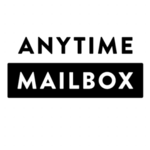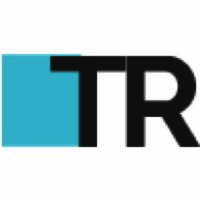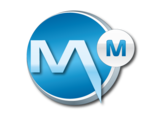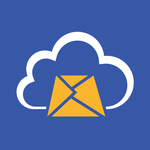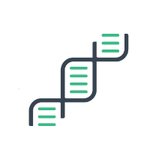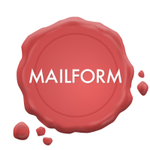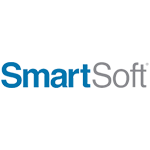What Is Mailroom Management Software?
Mailroom Management Software is a useful tool for firms who want to streamline their mailroom operations. This software provides a computerized solution for managing the complete mail process, including receipt, sorting, distribution, and tracking. At its core, mailroom management software helps to increase efficiency and reduce manual errors by automating mailroom processes. It eliminates the need for physical mail sorting, labeling, and routing, saving both time and resources.
One important feature of this program is its capacity to scan and arrange incoming and outgoing mail, whether physical or digital. Its strong document recognition skills allow it to scan, process, and store mail in digital format fast and accurately. This not only saves physical storage space, but also makes information more accessible to remote workers.
Mailroom management software also includes customizable procedures and automated processes that make tracking and distributing mail items easier. This allows organizations to quickly track the progress of incoming and outgoing mail from creation to delivery, resulting in increased visibility and accountability. In addition, this program includes security features such as user authentication and audit trails to ensure that important correspondence is handled securely and privately.
When choosing mailroom management software, look for characteristics like interoperability with your existing systems, scalability to fit your growing business, and a user-friendly interface for easy adoption by employees. Overall, investing in mailroom management software can improve your mail handling procedures, increase productivity, and reduce expenses in the long term. With the proper features and capabilities, it may be a significant asset for companies of all sizes.
What Are The Recent Trends In Mailroom Management Software?
Mailroom management software is an essential tool for organizations of all kinds since it automates the process of receiving, sorting, and distributing incoming and outbound mail. As technology advances, purchasers should be aware of numerous recent trends in mailroom management software so that they may make an informed decision.
Here are some of the prominent trends in the industry:
1. Cloud-Based Solutions: As cloud computing gains popularity, an increasing number of mailroom management software companies are offering cloud-based solutions. These alternatives enable easy access to the program from any device with an internet connection, removing the need for on-site servers and lowering total expenditures.
2. Mobile Accessibility: Mobile accessibility is becoming increasingly crucial in the business sector, and mailroom management software is no exception. Many carriers now provide mobile applications that allow customers to handle and track their mail while on the road, giving busy professionals more flexibility and convenience.
3. Integration With Other Systems: In today's fast-paced corporate world, having all of your systems function seamlessly is critical. That is why another important development in mailroom management software is the ability to interact with other business systems such as document management, customer relationship management (CRM), and accounting software.
4. Automation And AI: As technology advances, mailroom management software increasingly incorporates automation and artificial intelligence (AI). These capabilities can automate processes like mail sorting, routing, and tracking, freeing up staff time to focus on other important responsibilities.
5. Data Analytics: Mailroom data can provide useful insights into a company's efficiency and productivity. Recent developments in mailroom management software include the capacity to evaluate and report on this data, allowing firms to make more informed decisions and procedures.
6. Improved Security Features: As data privacy and security concerns grow, mailroom management software suppliers are introducing stronger security measures to secure sensitive information. These features may include data encryption, user access limits, and audit trails. As technology advances, we may anticipate even more developments and improvements in mailroom management software. Businesses that stay up to date on the newest developments can guarantee that they select a solution that matches their current and future requirements.
Benefits Of Using Mailroom Management Software
Mailroom management software is an essential tool for any firm wanting to improve its mailroom operations. It provides a number of advantages that can assist organizations of all sizes enhance their productivity, efficiency, and overall mailroom management processes.
We will discuss some of the primary advantages of adopting mailroom management software and how it can assist your firm.
1. Better Time Management: One of the most significant advantages of adopting mailroom management software is the potential to save time. Businesses can dramatically cut the time they spend on manual activities by implementing advanced features such as automated mail sorting and delivery. This frees up valuable resources and allows employees to focus on more vital duties, resulting in higher production and efficiency.
2. Improved Mail Tracking: With mailroom management software, tracking incoming and outgoing mail becomes easier. Businesses can use the program to trace the status of each mail item from the time it enters the mailroom until it reaches its intended recipient. This feature increases transparency, which promotes responsibility and lowers the likelihood of lost or missing mail.
3. Cost Savings: By automating operations and reducing time spent on manual chores, firms that use mailroom management software can drastically lower their operational costs. Furthermore, additional capabilities like mailroom analytics offer insights into mailroom operations, allowing firms to find areas for development, decrease waste, and save money.
4. Increased Security: With confidential and sensitive information being transferred via mail, firms must assure its security. Mailroom management software provides a variety of security capabilities, including tracking and recording all mail transactions, ensuring only authorized workers have access to specific mail items, and implementing password protection. This, in turn, increases the security of sensitive mail and lowers the danger of data breaches.
5. Improved Customer Service: Prompt and dependable mail delivery contributes to a great customer experience. Businesses can use mailroom management software to ensure that mail is delivered on time, decreasing delays and increasing customer satisfaction. Additionally, the software's extensive capabilities enable effective mail forwarding, return to sender, and redirection, keeping consumers informed and satisfied.
Important Factors To Consider While Purchasing Mailroom Management Software?
Mailroom management software is a vital tool for firms who want to streamline their mailroom operations. With so many alternatives available on the market, it can be difficult to evaluate which software is ideal for your firm.
These are the most critical elements to consider when selecting mailroom management software so you can make an informed selection.
1. Automation Capabilities: Automation capabilities are an important factor to consider when selecting mailroom management software. The program should be capable of automating a variety of operations, including receiving, sorting, and distributing mail, saving your team time and effort. Look for capabilities like barcode scanning, optical character recognition (OCR), and machine learning that can help improve the automated process.
2. Integration Of Current Systems: Before making a purchase, make sure that the mailroom management software works flawlessly with your current systems. This includes your email, document management, and CRM software. Integration enables a more streamlined and effective workflow, decreasing the need for manual data entry and the likelihood of errors.
3. Mobile Accessibility: Given the prevalence of remote work, it is critical to consider mailroom management software that is accessible via mobile devices. This enables your team to manage the mailroom wherever they are, enhancing efficiency and production. Look for software that has a mobile app or a responsive web interface for convenient access on the go.
4. Security Features: Mailrooms frequently receive sensitive and secret information, thus security is a primary consideration. When comparing software solutions, make sure to ask about the security aspects. Consider features such as data encryption, secure user authentication, and access controls. In addition, determine whether the software complies with industry standards and regulations such as HIPAA and GDPR.
5. User-Friendly Interface: A user-friendly interface is essential for the effective adoption of any product. Look for mailroom management software that is straightforward and simple to use, with little training required. A confusing interface might cause errors and reduce productivity. Most software companies provide demo versions or free trials, which allow you to gain hands-on experience and assess whether the interface is user-friendly.
6. Customization Options: Every firm has distinct mailroom requirements, and the software should be adaptable to meet those needs. Look for software that allows you to customize it to your exact needs. This can include everything from tweaking filters and notifications to setting user roles and permissions.
7. Customer Assistance: Finally, think about the amount of customer support provided by the software vendor. In the event of any challenges or issues, it is critical to have dependable customer service to assist you. Look for providers who provide many support channels, such as phone, email, or live chat, and have a reputation for providing timely and informative responses.
What Are The Key Features To Look For In Mailroom Management Software?
When it comes to managing a busy mailroom, every minute counts. A well-equipped mailroom not only ensures that critical mail is delivered and distributed on time, but it also helps to keep operations running smoothly and efficiently. This is where mailroom management software comes in. However, with so many options available on the market, selecting the correct mailroom software can be difficult.
To help you make an informed decision, here are some important characteristics to look for in mailroom management software:
1. Automation And Visibility: Look for software that automates mailroom procedures like sorting, tracking, and delivery. This saves time and lowers errors while also providing real-time visibility into the status and location of all incoming and outgoing mail.
2. Data Record And Record-Keeping: A competent mailroom management software should be able to record and save data from all incoming and outgoing mail, such as sender and recipient names, delivery dates, and tracking numbers. This will not only aid in auditing and reporting, but will also make it easier to locate and trace specific mail pieces when necessary.
3. Integration With Existing Systems: To reduce duplication of effort and ensure a smooth flow of information, select software that can interact with your existing systems, such as CRM, ERP, or document management software.
4. User-Friendly And Customizable Interface: Look for software that is simple to use and browse, with the ability to tailor workflows and settings to your organization's specific requirements. This will improve user adoption while reducing the learning curve.
5. Security And Compliance: To secure sensitive information, reputable mailroom management software should include strong security features such as data encryption, access limits, and audit trails. It should also adhere to industry standards and regulations, such as HIPAA or GDPR.
6. Mobile Access: With the rise of remote work and mobile devices, having software that allows users to access and handle email from their smartphones or tablets can significantly increase productivity and flexibility.
7. Customer Support And Training: Look for a software vendor who provides thorough customer support and training to ensure a seamless implementation and ongoing assistance with any technical issues that may emerge. By taking these essential qualities into account, you can ensure that you select mailroom management software that will assist you in streamlining your mailroom procedures, increasing efficiency, and eventually saving your organization time and resources.
Why Do Businesses Need Mailroom Management Software?
Businesses nowadays are dealing with a rising number of incoming and outgoing mail, ranging from letters and shipments to emails and digital files. Businesses may have significant challenges in managing and tracking their mail, resulting in inefficiencies, errors, and missing or delayed mail. Here's where mailroom management software comes in.
It is a comprehensive solution designed to manage the full mailroom process, from receipt and sorting to tracking and sending mail to the appropriate recipients. It provides a number of advantages that make it an indispensable tool for enterprises of any size. One of the primary benefits of employing mailroom management software is increased efficiency. The software automates several time-consuming manual operations, such as sorting and tracking mail, saving firms time and money.
This allows personnel to focus on more vital activities, resulting in higher productivity and more efficient operations. Furthermore, mailroom management software reduces the danger of human error. With traditional mailroom systems, there is always the risk of losing or misplacing crucial paperwork, which may be costly for firms. The software's barcode scanning and tracking functions ensure that every item of mail is precisely registered and easily accessible if needed.
In addition, the program gives firms real-time visibility and control over their mailroom operations. Managers can monitor the status of incoming and outgoing mail, as well as delivery timings, to identify any bottlenecks or concerns. This data enables firms to make more informed decisions and optimize their processes for increased efficiency. Another important part of mailroom management software is its security features.
It ensures that sensitive and confidential information is handled with extreme caution and safety. The software has access restrictions that allow only authorized staff to handle and process certain mail items, lowering the risk of data breaches and theft. Finally, with the proliferation of remote and hybrid work arrangements, businesses want a solution that can successfully manage both physical and digital mail. Mailroom management software integrates with email platforms, allowing organizations to manage both digital communications and physical mail in a single consolidated system.
How Much Time Is Required To Implement Mailroom Management Software?
The time it takes to implement mailroom management software varies depending on a company's individual needs and requirements. On average, the procedure might take anywhere from a few days to a few weeks, depending on the software's complexity and the size of the business. First and foremost, it is critical to recognize that deploying mailroom management software is not a one-size-fits-all approach.
Each organization has its own distinct procedures, systems, and workflows in place. As a result, the time necessary for implementation will vary depending on the size of the mailroom, the number of employees, and the level of software customisation. The first step in deploying mailroom management software is to evaluate existing mailroom procedures and identify pain areas that must be addressed.
This can take anything from a few days to a week, depending on the organization's size and operational complexity. Once the assessment is completed, the software will be customized to meet the organization's specific requirements. This can take anything from a week to a month, depending on the level of customization needed. It is critical to consult all stakeholders in this phase to guarantee that the software meets their needs and expectations.
Following the customisation process, the software must be connected with existing systems, such as accounting or customer relationship management software. This procedure can take anything from a few days to a week, depending on how difficult the integration is. Once the software has been modified and integrated, it must be thoroughly tested to ensure that it works properly and meets all of the organization's requirements.
The testing phase can last anything from a few days to a week. Finally, once testing is completed, the program can be distributed to staff. Depending on the size of the firm, it may take several days to a week to teach all staff on how to utilize the new system successfully. Furthermore, employees may face a learning curve as they adjust to the new program, which might vary in length depending on the individual.
What Is The Level Of Customization Available In Mailroom Management Software?
The level of flexibility available with mailroom management software varies based on the system used. However, most modern mailroom management software allows for extensive customization to meet your company's specific demands and operations. One of the primary advantages of custom mailroom management software is the opportunity to modify it to your specific mail handling procedures.
This includes features like creating unique mail categories, assigning specific responsibilities and roles to users, and implementing automated procedures based on your organization's requirements. Another benefit of customisation is the potential to interact with other software and systems that your company may already be utilizing. Accounting systems, CRM software, and even inventory management solutions may fall under this category.
Integrating your mailroom management software with these technologies allows you to streamline business operations and increase overall efficiency. Furthermore, configurable mailroom management software frequently includes a variety of functions that may be tailored to your company's needs. This can feature customizable reporting, tracking, and sorting options, as well as the ability to schedule notifications and reminders for certain tasks.
Overall, the level of customization possible in mailroom management software enables firms to adjust the software to their own requirements and operations. This can lead to a more efficient and streamlined mail handling procedure, ultimately saving time and resources for the company. Before selecting mailroom management software, make sure to consider the level of customization available to ensure it meets your company's needs.
Which Industries Can Benefit The Most From Mailroom Management Software?
Mailroom management software is an essential tool for any organization or business that handles a large volume of incoming and outgoing mail. It provides a streamlined and efficient solution for tracking, routing, and managing all mail-related duties, saving time and resources for the organization.
While mailroom management software can assist a wide range of sectors, some in particular can profit significantly from incorporating it into their operations.
1. Healthcare Industry: Medical records, test results, and insurance paperwork are all examples of sensitive patient information that is constantly transmitted in the healthcare industry. To ensure regulatory compliance and patient confidentiality, this information must be handled with the highest care and efficiency. Mailroom management software can assist healthcare organizations in securely tracking and distributing critical documents, lowering the risk of errors while protecting patient privacy.
2. Legal Sector: The legal sector handles a significant amount of sensitive and secret information, such as legal documents, contracts, and client information. Mailroom management software can help you receive, organize, and distribute these documents more efficiently, reducing the danger of misplacing or losing important information. It also offers a secure and dependable way to track delivery and keep track of all mail transactions, which can be useful in legal processes.
3. The Real Estate Sector: Is primarily reliant on paper and document transactions. Real estate transactions entail a significant amount of paperwork, including property deeds, contracts, and agreements. Mailroom management software can streamline the process of managing and tracking these documents, lowering the likelihood of errors and delays. It also enables real estate agents to keep track of all correspondence with clients, making it easier to access critical information when needed.
4. Financial Services Industry: In the financial services industry, precision and efficiency are essential. Transactions, statements, and other financial documents must be processed and provided immediately. Mailroom management software can automate the process of sorting, routing, and delivering these documents, resulting in timely and precise delivery. It also includes sophisticated tracking and reporting capabilities, making it easy to monitor and control the progress of all mail items.
5. Government Agencies: Government agencies also handle a large volume of paperwork and communication by mail. Mailroom management software can help expedite the process of receiving, sorting, and distributing mail, lowering the likelihood of delays and errors. It also includes additional security capabilities to protect the secrecy of government communications.
Conclusion
Finally, Mailroom Management Software may help organizations of all sizes optimize their mailroom processes, increase efficiency, and save time and money. Companies that use sophisticated mailroom management software can effectively track, handle, and distribute incoming and outgoing mail, shipments, communications, and documents. Buyers may make an informed selection and select the best software for their unique requirements by taking into account features, cost, compatibility, and user-friendliness.
Furthermore, it is critical to choose a software vendor that provides great customer support and training to enable a smooth transition and successful installation. Businesses that use the correct mailroom management software can optimize their mailroom operations, improve their entire process, and increase productivity. We hope that this guide has given you a complete grasp of the benefits and features to consider when selecting the best mailroom management software for your firm.







